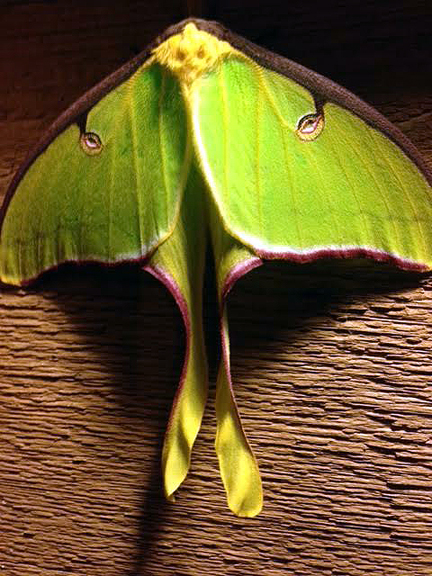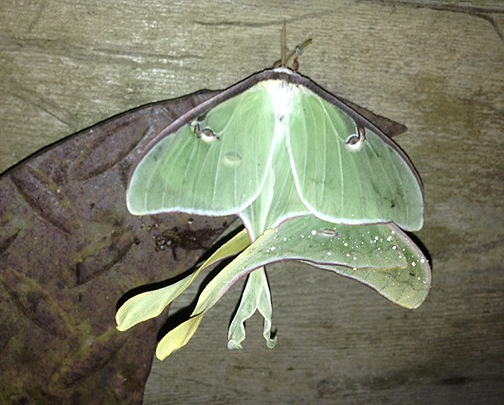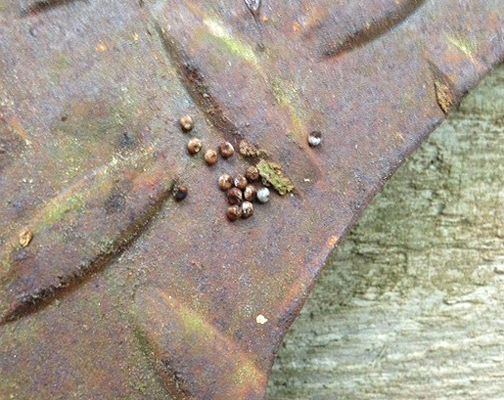
Santa Rosa Beach resident Sherry McCall enjoyed a few unusual visitors to her workshop this week. Early on in the week, McCall was treated to a luna moth that took up residence on the exterior of her workshop wall. Then, over the next few days two more moths appeared.
On Thursday, McCall spotted two of the luna moths gracefully in union on the wall. Then, as the moths magically appeared, they disappeared into the night.

However, the magical moments are not over for McCall, as the female left eggs deposited on her door. She will witness the cycle of metamorphosis, as the eggs will transform into caterpillars, then cocoons, and then another moth.
About luna moths:
Common Name: Luna moth
Scientific Name: Actias luna (Linnaeus)
Order: Lepidoptera

Description: These moths are large, with a 4 to 5 inch wingspan. Wings are light green, marked with transparent spots and a pink-purple or yellow forewing margins and hind wings bearing long twisted tails. Caterpillars are translucent light green with a pale yellow horizontal line along each side and reddish-orange fleshy knobs (tubercles) on each body segment. They grow to be 2 3/4 inches long.
Life Cycle: Adults begin to emerge in the spring (March) to mate and lay oval eggs. Caterpillars develop through several molts before spinning a papery cocoon among dead leaves that usually falls to the ground. There are two generations per year.
Habitat and Food Source(s): Caterpillars have chewing mouth parts. Adults have siphoning mouths. Caterpillars feed on leaves of walnut, hickory, sweetgum, maple, oak, persimmon, willow and other trees. Adults can be attracted to lights, or males can be attracted to an imprisoned female. All colors will fade in preserved specimens when exposed to light.
Pest Status: “Moon” moths are active at night and are harmless, caterpillars feed on tree leaves but are rarely found in large numbers; medically harmless.
Management: None, harmless.
Information courtesy https://insects.tamu.edu
